North Carolina’s waterfalls draw millions of visitors each year, offering stunning views and refreshing mist that feels like nature’s air conditioning. But behind all that beauty lie important rules designed to keep you safe and protect these natural treasures for future generations.
Many tourists skip reading signs or assume common sense is enough, which leads to accidents, fines, and environmental damage.
Understanding these hidden rules before you go can make your waterfall adventure safer, more enjoyable, and respectful of the incredible landscapes you came to see.
1. Stay Behind Guardrails and Barriers
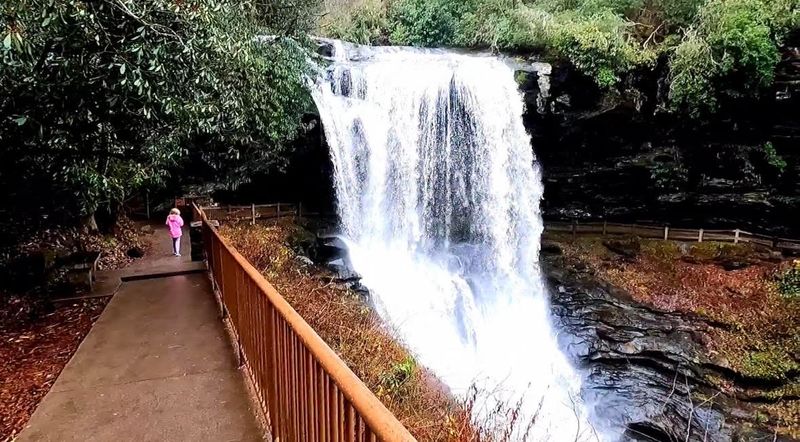
Those metal railings and wooden fences aren’t just suggestions. Park officials install barriers at the most dangerous spots where rocks crumble easily or where people have fallen in the past.
Every year, rescue teams respond to emergencies involving visitors who climbed over railings to get closer or snap a better photo.
The ground near waterfall edges stays slippery from constant moisture, and what looks like solid rock might actually be loose or covered in slick algae. One wrong step can send you tumbling down steep drops with nothing to grab onto.
Rangers report that most serious injuries happen when people ignore these protective boundaries.
Respecting barriers also protects fragile plant life clinging to cliff edges. These rare species took decades to establish themselves in harsh conditions.
When you stay on designated paths and behind guardrails, you’re protecting both yourself and the ecosystem that makes these waterfalls so special to visit.
2. Swimming Restrictions Are Strictly Enforced
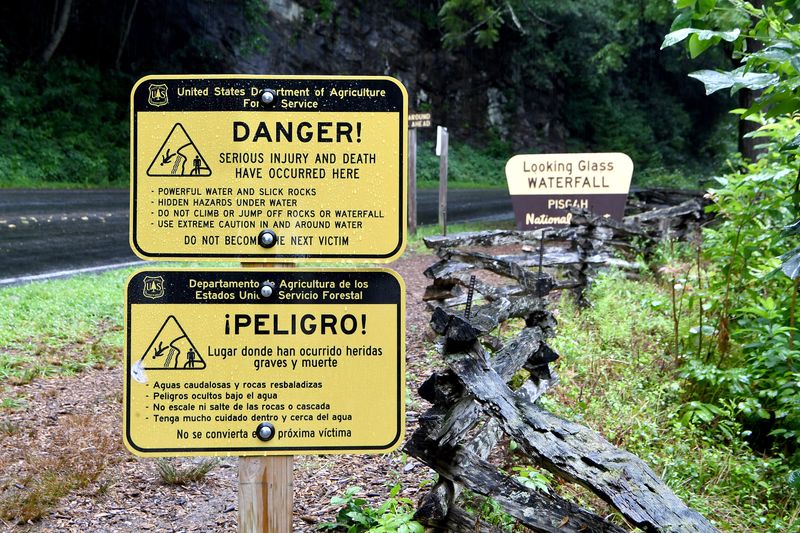
Not every waterfall allows swimming, even when the water looks inviting on a hot summer day. Many popular spots like Linville Falls and Whitewater Falls prohibit swimming entirely due to strong currents, submerged rocks, and unpredictable water levels.
Posted signs clearly state these restrictions, but tourists often miss them or choose to ignore the warnings.
Cold mountain water numbs your muscles faster than you’d expect, making it hard to swim even short distances. Hidden currents beneath calm surfaces can pull swimmers toward dangerous areas or hold them underwater against rocks.
Park rangers issue citations to rule breakers, and fines can reach several hundred dollars.
Where swimming is permitted, designated areas exist for good reasons. These spots have been tested for depth, current strength, and underwater hazards.
Always check current regulations before your visit since rules can change based on recent weather, water quality tests, or safety incidents that occurred during previous seasons.
3. Climbing on Wet Rocks Is Prohibited
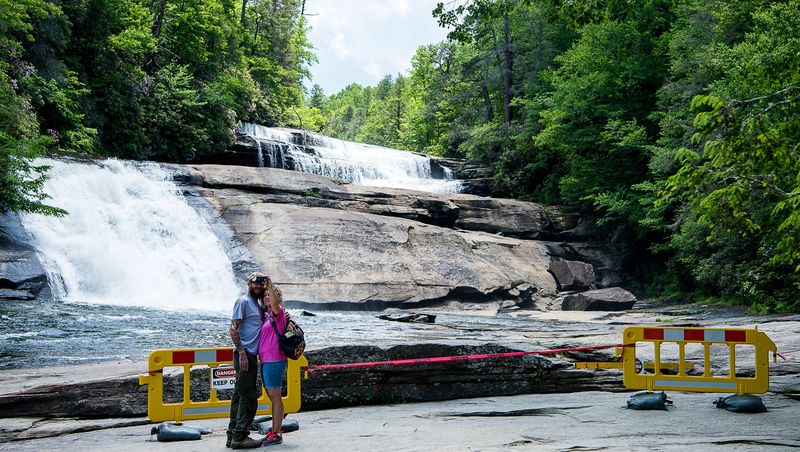
Waterfall rocks stay perpetually damp from mist and spray, creating surfaces as slick as ice rinks. What appears to be a fun scramble can turn into a medical emergency within seconds. State parks across North Carolina specifically prohibit rock climbing near waterfalls because the combination of moisture, algae, and moss makes these surfaces impossibly treacherous.
Even experienced hikers wearing proper footwear struggle to maintain grip on these wet stones. Your regular sneakers or sandals offer virtually no traction once water seeps in.
Falls on these rocks frequently result in broken bones, head injuries, and difficult rescue operations that put emergency responders at risk too.
Some visitors think they can test their balance or that the rules don’t apply if they’re being careful. However, statistics from park services show that most accidents happen to people who considered themselves cautious.
The physics of wet rock simply don’t care about your confidence level or athletic ability, making this one rule worth following without exception.
4. Pets Must Stay on Leash at All Times

Your furry friend might love adventure, but North Carolina state parks require leashes at all waterfall sites for everyone’s safety. Unleashed dogs can startle wildlife, chase other visitors, or bolt toward dangerous cliff edges when excited by rushing water sounds.
Even the most obedient pets can become unpredictable in new environments filled with exciting smells and sounds.
Leash laws also protect local wildlife that depends on these habitats for survival. Dogs running free disturb nesting birds, small mammals, and salamanders that live near waterfall environments.
These creatures already face challenges from human foot traffic, and loose pets add unnecessary stress to their daily survival.
Maximum leash length is typically six feet, though some trails restrict this further in narrow or steep sections. Retractable leashes often violate these rules because they extend too far and give owners less control.
Rangers regularly patrol popular waterfall areas and will issue citations to visitors whose pets roam freely, so keeping Fido secured protects your wallet as well as the environment.
5. Drones Require Special Permits

Flying your drone over waterfalls might seem like the perfect way to capture epic footage, but most North Carolina waterfall locations prohibit drone use without advance permits.
State parks, national forests, and wilderness areas have strict regulations about unmanned aircraft because they disturb wildlife, annoy other visitors seeking peaceful nature experiences, and pose safety risks if they malfunction over crowded areas.
Birds nesting near waterfalls perceive drones as predatory threats, sometimes abandoning nests or attacking the devices. The buzzing noise also ruins the natural soundscape that many visitors travel hours to experience.
Getting caught operating a drone without proper authorization can result in hefty fines and confiscation of your equipment.
If you want aerial footage, research permit requirements weeks before your trip. Some locations never grant recreational drone permits, while others require proof of insurance, pilot certification, and detailed flight plans. Commercial drone operators face even stricter regulations.
Check with specific park offices rather than assuming permission, because ignorance of these rules won’t prevent penalties if rangers catch you flying illegally.
6. Leave No Trace Means Taking Everything Out
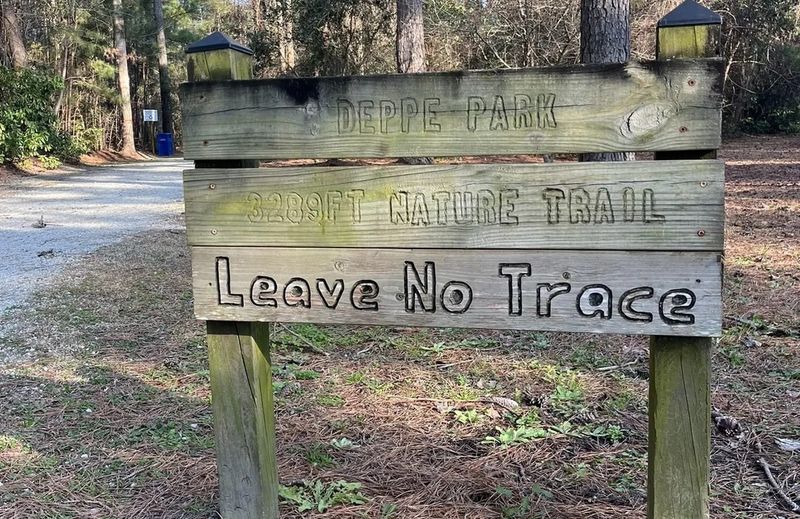
That snack wrapper, empty water bottle, or banana peel doesn’t belong in nature, period. North Carolina enforces Leave No Trace principles at all waterfall sites, meaning whatever you pack in must come back out with you.
Littering carries fines starting at one hundred dollars, and rangers don’t make exceptions for biodegradable items either.
Even organic materials like fruit peels and nutshells disrupt natural ecosystems when left behind. They introduce non-native seeds, attract animals to human areas, and take longer to decompose than most people realize.
Orange peels can persist for two years in mountain environments, while apple cores take up to eight weeks to break down completely.
Proper waste disposal means carrying a small bag for trash throughout your hike. Most waterfall parking areas provide bins, but trails themselves rarely have garbage cans because maintaining them would require constant staff presence.
Plan ahead by bringing resealable bags for wet or dirty items. Teaching kids to pack out their own trash instills lifelong environmental responsibility while keeping these beautiful places pristine for everyone.
7. Parking Passes Are Required and Checked
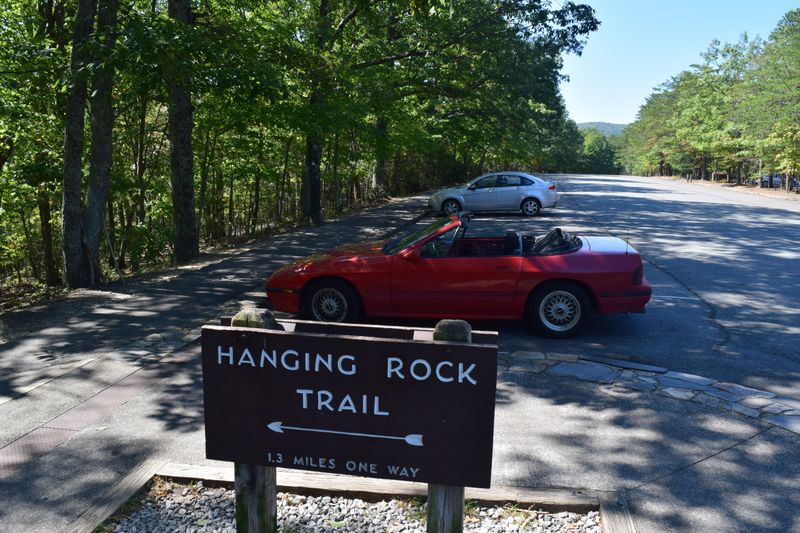
Pulling into a waterfall parking area without the proper pass seems like a minor oversight until you return to find a ticket on your windshield. North Carolina state parks require parking passes at most waterfall locations, and rangers check vehicles multiple times daily.
These passes fund trail maintenance, bathroom facilities, and ranger services that keep these sites safe and accessible.
Daily passes typically cost five dollars, while annual passes offer better value for frequent visitors. You can purchase them online before your trip, at park offices, or through self-service stations at some trailheads.
However, not all locations accept credit cards, so bringing exact cash prevents headaches.
Citations for parking without proper passes start around fifteen dollars but can climb higher depending on the specific park. Some popular waterfalls like DuPont State Forest have different parking systems than state parks, so research your specific destination beforehand.
Display your pass clearly on your dashboard with the date visible. Rangers won’t track you down on the trail to verify payment, they’ll simply ticket unpermitted vehicles and move on to the next car.
8. Trail Shortcuts Damage Ecosystems and Break Rules
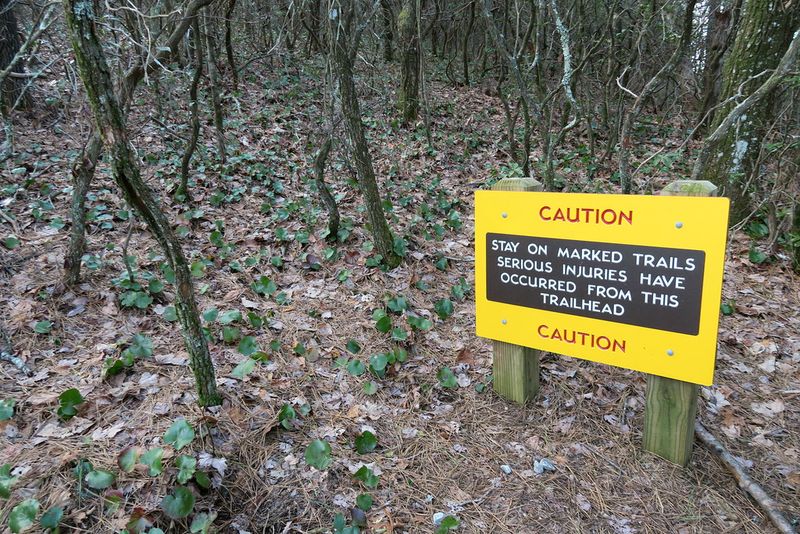
When switchbacks seem tedious or muddy sections look gross, cutting across unmarked terrain feels tempting. But creating shortcuts destroys fragile mountain vegetation, causes erosion that damages trails for years, and violates park regulations designed to protect these environments.
Rangers can fine visitors who repeatedly leave designated paths, especially in protected wilderness areas.
Mountain plants grow slowly in rocky soil with limited nutrients. A single footstep can crush vegetation that took decades to establish. When multiple people use the same shortcut, it creates an unofficial trail that channels rainwater, washing away topsoil and eventually requiring expensive repairs to prevent further damage.
Staying on marked trails also keeps you safer. Trail designers route paths to avoid unstable ground, poison ivy patches, and wildlife dens. What looks like an easy shortcut might lead you into dangerous terrain or get you lost in unfamiliar forest.
The extra ten minutes you save by cutting corners isn’t worth the environmental damage, safety risks, or potential fines. Patience on the trail preserves these natural wonders for future generations to enjoy.
9. Collecting Rocks, Plants, or Artifacts Is Illegal
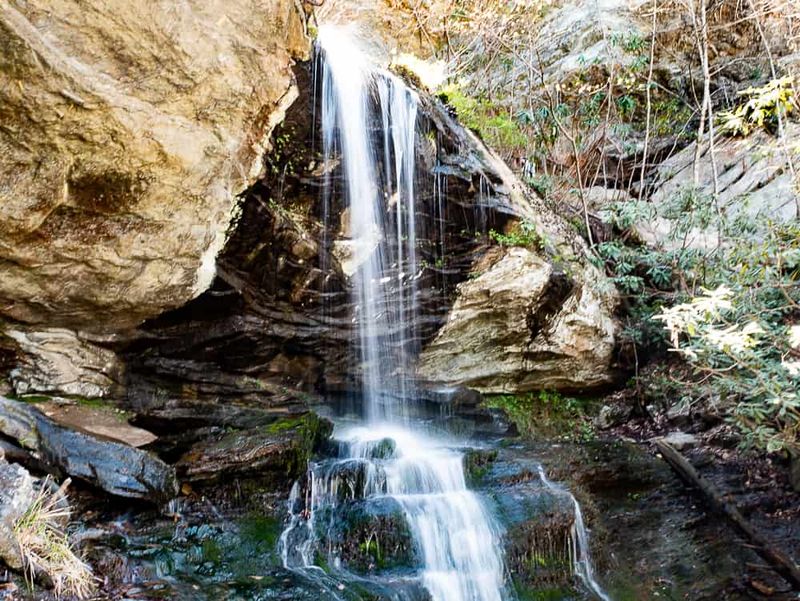
That pretty quartz crystal or interesting moss clump might seem like a harmless souvenir, but removing anything from North Carolina waterfall sites violates state and federal laws. These regulations protect geological features, rare plants, and cultural artifacts for scientific study and public enjoyment.
Even picking wildflowers can result in citations, particularly for protected species that grow only in specific waterfall environments.
When thousands of visitors each take just one small item, the cumulative impact devastates these ecosystems. Rare salamanders depend on specific rock arrangements for shelter. Native plants rely on natural seed dispersal patterns that get disrupted when people pick flowers before they go to seed.
Fines for collecting natural items start at seventy-five dollars but increase dramatically for protected species or archaeological materials. Some waterfalls sit near Cherokee lands where cultural artifacts hold sacred significance, making their removal not just illegal but deeply disrespectful.
Take photos instead of physical souvenirs. Your memories and pictures will last longer than a rock that ends up forgotten in a drawer, and you’ll leave these special places intact for the next visitor to discover and appreciate.
10. Sunset Hikes Require Proper Planning and Equipment
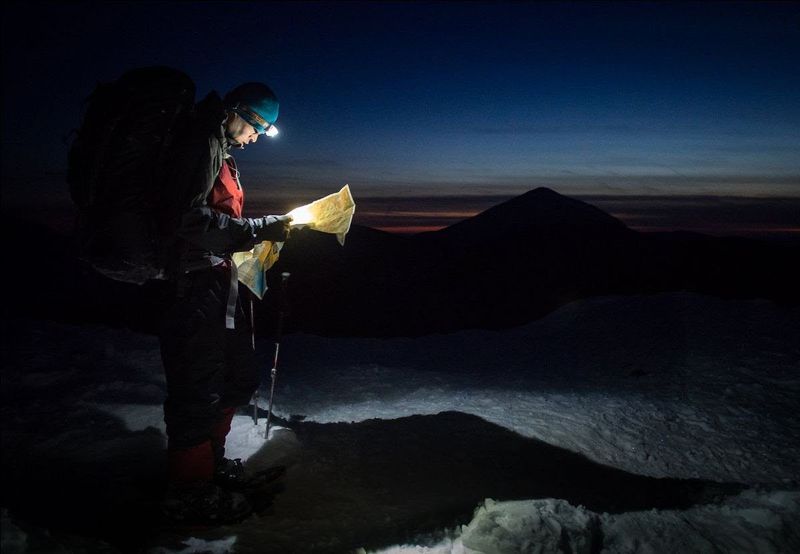
Chasing that golden hour photo opportunity sounds magical until darkness catches you unprepared on an unfamiliar trail. Many North Carolina waterfall parks don’t close at sunset, but hiking after dark without proper equipment violates safety regulations and common sense.
Rangers strongly discourage sunset hikes unless you bring headlamps, extra batteries, and navigate trails you’ve walked before in daylight.
Mountain darkness arrives faster than lowland twilight because surrounding peaks block fading sunlight. What seemed like plenty of time to return suddenly becomes a scramble as shadows deepen rapidly.
Trails that felt obvious in daylight turn confusing when you can’t see trail markers, and waterfall areas become extremely dangerous when you can’t judge distances or spot wet rocks.
If you plan a late hike, inform someone of your route and expected return time. Bring warm layers since mountain temperatures drop sharply after sunset, even in summer. Check park-specific regulations because some locations prohibit trail access after certain hours.
Search and rescue operations for lost hikers cost taxpayers thousands of dollars and put volunteers at risk, so proper planning isn’t just about following rules but being a responsible outdoor enthusiast.
Dear Reader: This page may contain affiliate links which may earn a commission if you click through and make a purchase. Our independent journalism is not influenced by any advertiser or commercial initiative unless it is clearly marked as sponsored content. As travel products change, please be sure to reconfirm all details and stay up to date with current events to ensure a safe and successful trip.